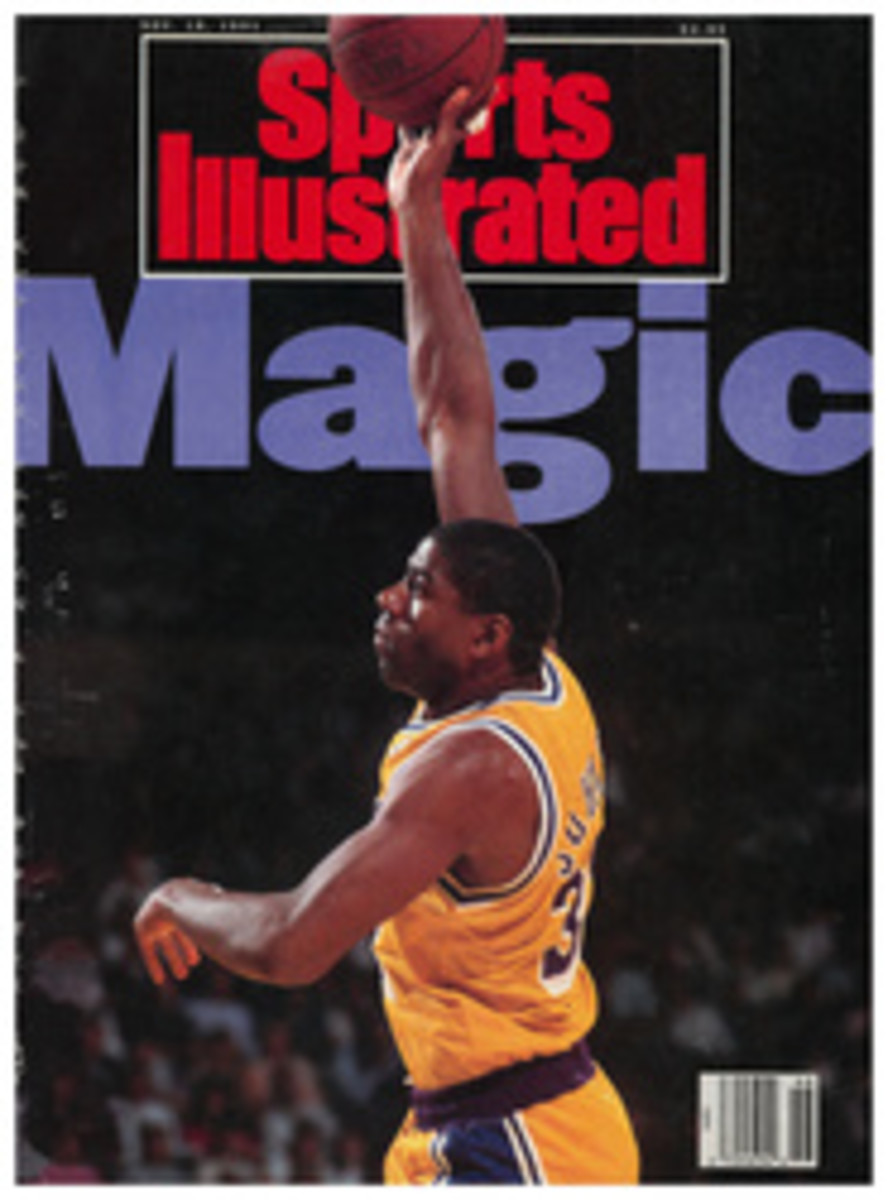
The Odd Man and the Sea
Situated among the quaint and oh-so-expensive summer cottages surrounding Mill Pond in Chatham, Mass., is a large barn, the workshop of the Mill Pond Boat Yard. Since the 1930s the shop has been building and restoring classic wooden sailboats, dories and runabouts. This past June, however, the barn was home to a different kind of craft: a gleaming 22-foot Kevlar-and-fiberglass vessel that looked like a cross between a great white shark and a Bugatti race car. The craft had three dagger boards like those on sailboats, but a flat bottom like that of a surfboard. A desalinization pump to make potable water out of seawater suggested that the vessel was destined for a long voyage. But why was the compass on top of the cabin mounted backward? And why did the boat have oarlocks? Then the dawn broke: The compass was backward because rowers go backward.
This mysterious craft was called the Ramereve—French for "to row," ramer, and "to dream," rever. It was a transatlantic single scull. Shorter than a flat-water racing single and weighing less than an eight-oared shell, it had been designed to travel thousands of nautical miles.
Frederic (Fredo) Guerin, 36, was both the builder of the Ramereve and the man who would attempt to row it solo from the United States to Europe in record time, or less than the 72 days taken by Gerard d'Aboville of France, who set sail from Chatham in 1980. From his home in La Trinitè sur Mer, a Brittany village that is the Newport of France, Guerin had already sailed the Atlantic 13 times, including three solo crossings. He was so convinced that his high-tech Ramereve would enable him to row across the Atlantic that he invested about $40,000 in the attempt—much of the money borrowed. But he had a handicap: As he explained last June in halting English, building the Ramereve had taken so much time that he hadn't been able to train. In fact, he said, the longest distance he had ever rowed was four miles.
So why was he doing this? To answer, Guerin removed a circle of wood from the bottom of the cabin to reveal a six-inch porthole, his "fishovision." He was especially proud of it. "Sailing...." He shrugged. "Too fast. I want to get closer to the fishes and the squirrels." He meant squales, French for dogfish, but—squirrels or squales—this was nuts.
The old-timers who lived near the Boat Yard were used to Guerin's sort of craziness. Ralph Lightfoot, an expert at navigation, noted that the volume of the Gulf Stream's flow is a thousand times that of the Mississippi. Lightfoot calculated that a lucky boatman might be able to simply drift across on the Stream in 140 days. Lightfoot also said that Chatham, which is on Cape Cod and some 240 miles west of the Gulf Stream, was a good place to start such a venture, and that the Boat Yard's shop had a special karma. The barn had been made from timbers once belonging to Chatham's Naval Air Station, from which, in 1919, a U.S. Navy seaplane made the first flight from the United States to Europe.
A handful of transatlantic rowers had also set forth from Chatham. In 1966, two British Army paratroopers, Captain John Ridgeway and Sergeant Shay Blyth, arrived at the Boat Yard with a 20-foot open wooden dory and the desire to test their survival training by rowing home. The locals gave them new oars and taught them to row the dory, and a small flotilla of townsfolk towed them out beyond the breakers. Ninety-six days later, the Brits reached Ireland. At about the same time, a pair of British journalists tried to make the same crossing. But they did not start from the Boat Yard—they embarked from Orleans, another town on the Cape—and were never heard from again.
In 1980, the 36-year-old D'Aboville, an aristocrat and adventurer, appeared at the yard with a specially designed mahogany lifeboat, hoping to make the first solo row across the Atlantic. While D'Aboville's 18-foot craft had a cabin, it also had the fixed seat of a traditional rowboat. D'Aboville's boat was monstrously heavy—it weighed some 2,200 pounds when fully laden with about 60 gallons of water and 15 gallons of red wine. Within a week after setting forth, the Frenchman radioed for help. The sloshing movements of the craft had turned his wine into vinegar. A Greek ship responded to his predicament and offered to supply him with more wine. D'Aboville accepted, and went on his way. After 72 days, he arrived safely in Brittany and briefly became a national hero.
In 1987, a 29-year-old nuclear technician, Guy Lemonnier, announced that he could row to France in only 60 days. An accomplished oarsman, Lemonnier had trained with the French national team. His $100,000 Kevlar-and-fiberglass boat, the 21-foot Jacquet Enterprise, was equipped with a sliding seat to add leg power to the rowing stroke and a desalinization pump so he wouldn't have to carry a store of water. The loaded weight of the boat was 1,300 pounds.
Lemonnier scorned the Mill Pond Boat Yard for a high-tech marina crosstown. During his days on the Cape, he spoke as if he believed that his combination of muscles and science could conquer any ocean. "I could row around Chatham for 60 days, no problem," he said at a press conference. "This is just that in a straight line." Not so. For several weeks Lemonnier rowed well and fast with the stream, but eventually he encountered the downside of a warm current that crosses a cold ocean. Storms tossed his boat around, beating Lemonnier up so badly that he had to be fished out of the sea by a Soviet trawler some 950 miles short of his goal.
Guerin began thinking about making the crossing in 1987 and got serious in September 1990. He had marine architect Olivier Racoupeau design a superlightweight boat (900 pounds, fully loaded) and talked a Kevlar manufacturer into donating the needed material. In early June, after a blessing at the French convent where Guerin's sister is a nun, Ramereve was put aboard a cargo ship for the voyage to the Mill Pond Boat Yard. There Guerin set up camp and prepared to enter the Gulf Stream.
As the June 27 launch date grew near, Guerin's new friends around the Boat Yard grew increasingly worried about his lack of training. In one two-week period last spring he rowed around the pond only three or four times. "It's like lying down before the Super Bowl," said George Douglass, the owner of the Boat Yard.
For his part, Guerin seemed distinctly untroubled by the prospect of 60 or more days alone at sea. He recalled a solo Atlantic sailing race from La Trinitè sur Mer to Guadeloupe in 1989, during which his radio quit on the first day. He had also forgotten to pack extra batteries for his navigational computer. Out of touch with the world and navigating by the stars, he nevertheless placed second among 64 boats.
In fact, just days before the launch, the only thing that seemed to ruffle Guerin was a blonde at a local bar who refused to believe he was planning to row the Atlantic. Guerin left the bar muttering. After he had gone, the blonde said, "That's the worst line I've ever heard."
Launch day was clear and sunny, with a westerly breeze of eight knots. Shortly after noon, Douglass, in the same wooden skiff he had used to tow D'Aboville 11 years earlier, tossed a line to Guerin in Ramereve. The boat was pulled through the surf to the Chatham Harbor buoy. At 1:40 p.m. Guerin was cast off. Perhaps 50 people on seven boats had come to bid him bon voyage. Looking, in his billowing white shirt and cap, more like an old-time aviator than an oarsman, he stood up and waved heartily to his audience. Then he sat down and began to row.
For entertainment, Guerin had with him a tape player and cassettes (one by, appropriately, Dire Straits); several books, including D'Aboville's account of the 1980 voyage; and, of course, the fishovision. For food, he had 60 days worth of cereal and foil packets containing freeze-dried meals. He also carried a CB radio, a marine band radio, a radar detector to warn him of approaching ships, and a distress beacon that could bounce an SOS off a satellite. He had a shark-identification manual, flares and a bottle of Scotch, which couldn't be spoiled by sloshing.
An hour after he started, Guerin was located by a tuna-spotter pilot some five nautical miles out to sea. Already he had rowed a mile farther than he had ever done before.
By the Fourth of July, Guerin had traveled 450 miles from Chatham. He spent the day watching his fishovision, waiting for a headwind to ease.
More ill winds blew. Ramereve capsized once, twice and then a third time. In August the boat was overturned by Hurricane Bob.
More headwinds.
Another capsizing—the fifth in all.
By September, Guerin was running out of steam, and it was clear that he had little chance to break the record.
Eighty-five days after launch and about 50 miles from Ireland, one "very tired" and now all too experienced rower activated his distress beacon. A few hours later he was picked up by helicopter. Guerin was unhurt and his boat was still seaworthy, but the record had long been lost. So had been most of his electronic equipment, which went overboard in the dumpings. Guerin pulled the plug on his effort after spending eight consecutive days dragging a sea anchor against yet another headwind, rowing but going nowhere.
PHOTO
LUC NOVOVITCH/GAMMA-LIAISON
With high tech on his side, Guerin took a decidedly laid-back approach to his trip across the ocean.
PHOTO
LUC NOVOVITCH/GAMMA-LIAISON
Guerin slept comfortably, knowing an alarm would warn of oncoming ships.
PHOTO
LUC NOVOVITCH/GAMMA-LIAISON
Guerin would be the first to admit that rowing wasn't his strongest suit.
Stephen Kiesling is a free-lance writer who lives in Westport, Conn.

